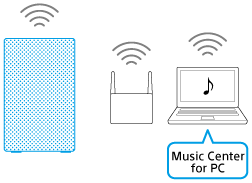

In 1986 Sony presented the first model outfitted with remote control, as well as one with solar battery (WM-F107). In October 1985, the WM-101 model was the first in its class with a "gum stick" rechargeable battery. The first model with autoreverse was released in 1984. This allowed even easier carrying of a Walkman in bags or pockets. The first ultra-compact "cassette-size" Walkman was introduced in 1983, model WM-20, with a telescopic case. The first model with Dolby noise-reduction system appeared in 1982.

Sony applied the "Walkman" brand to some transistor radios starting with the matching blue SRF-40 FM Walkman in 1980, and added a radio to some Walkman cassette models starting with the model WM-F1 in 1982. In 1981 Sony released the second Walkman model, the WM-2, which was significantly smaller compared to the TPS-L2 thanks to "inverse" mounting of the power-operated magnetic head and soft-touch buttons. The 1980s was the decade of the intensive development of the Walkman lineup. Three Walkman players, variously dating between 19 Though Sony predicted it would sell about 5,000 units a month, it sold more than 30,000 in the first two months. The metal-cased blue-and-silver Walkman TPS-L2, the world's first low-cost personal stereo, went on sale in Japan on July 1, 1979, and was sold for around ¥33,000 (or $150.00). He asked executive deputy president Norio Ohga to design a playback-only stereo version optimized for walking. Sony cofounder Masaru Ibuka used Sony's bulky TC-D5 cassette recorder to listen to music while traveling for business. Pavel later lost his suit claiming the Walkman idea as his own. In the 1970s, Brazilian inventor Andreas Pavel devised a method for carrying a player of this type on a belt around the waist, listening via headphones, but his " Stereobelt" concept did not include the required engineering advancements to yield high-quality sound reproduction while the tape player was subject to mechanical shock as would be expected on a person walking. Portable tape players of various designs were available, but none of them were intended to be operated by a person as they were walking. In the late 1960s, the introduction of prerecorded compact cassettes made it possible to listen to music on portable devices as well as on car stereos, though gramophone records remained the most popular format for home listening. The Compact Cassette was developed in 1963 by the Dutch electronics firm Philips.


 0 kommentar(er)
0 kommentar(er)
